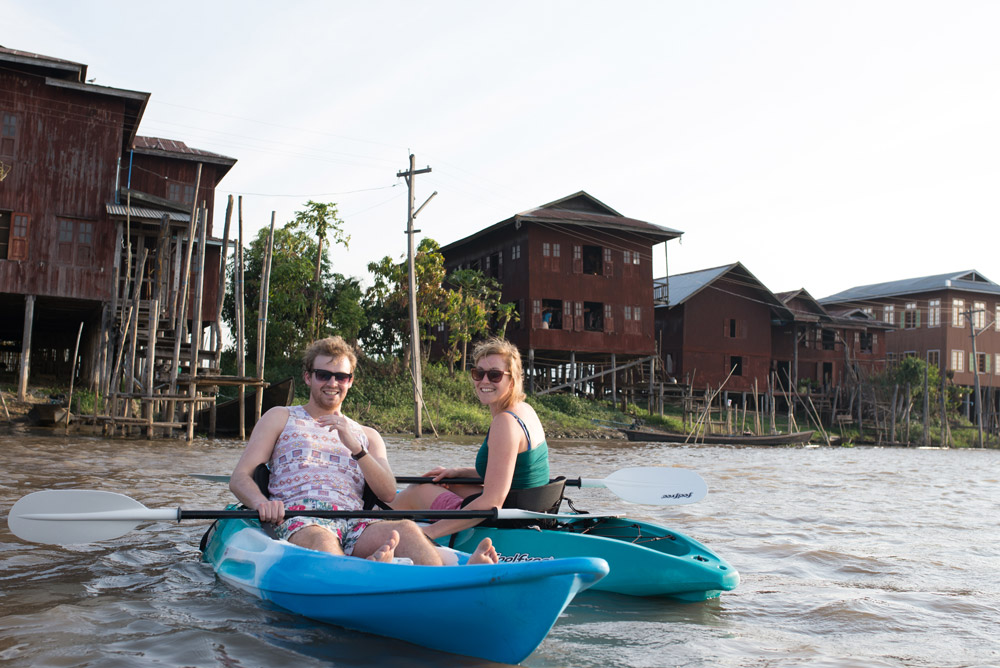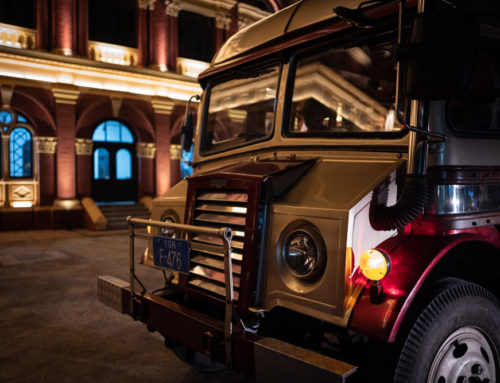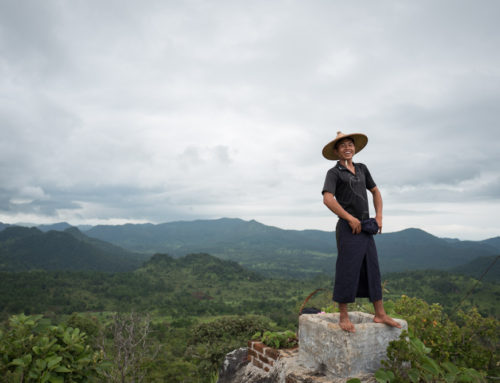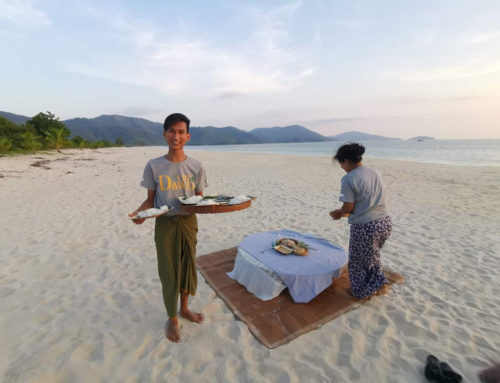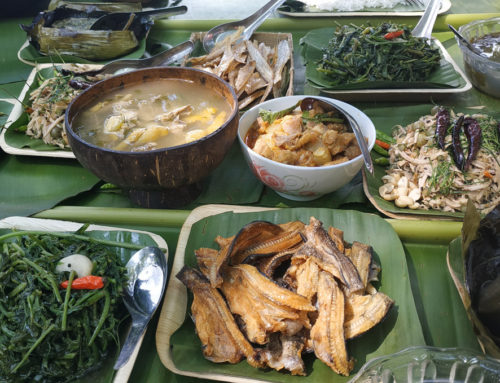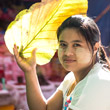PADDLING IN PARADISE
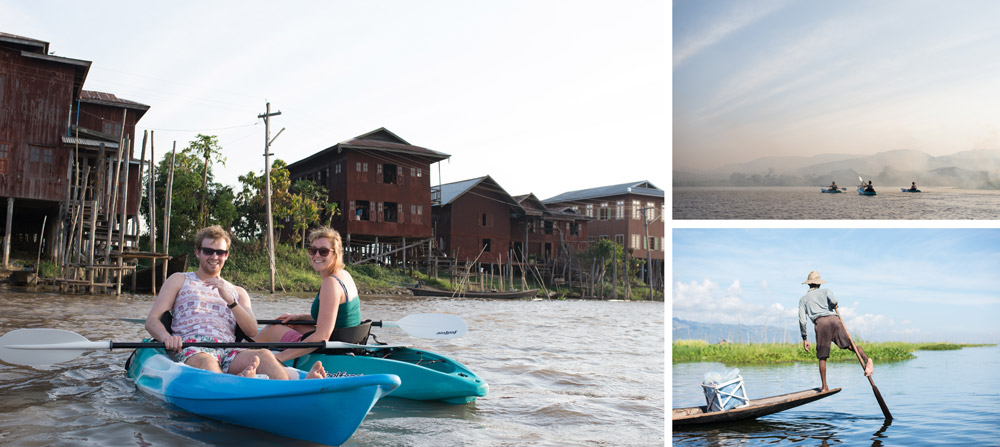
![]() OVERVIEW
OVERVIEW
Without the help of a diesel-powered longtail boat, navigating the waters of Inle Lake becomes a long and tedious task. Until there’s a quieter and more environmentally friendly option (that’s affordable and can reliably cater for the large number of tourists that flock to the region), one of the best ways of exploring is by kayak. Not only will this force you to slow down the pace, but it also frees you from the boat engine’s monotonous rattling sound, reduces your carbon footprint and is generally less disruptive to the people whom inhabit the lake.
![]() PACE
PACE
Medium
![]() TOUR PERIOD
TOUR PERIOD
Half day
![]() HIGHLIGHTS
HIGHLIGHTS
- Free yourself from the sounds of a diesel engine and explore Inle Lake’s waters at a slower and quieter pace.
- With floating gardens in the foreground and mountains in the back, enjoy some moderate exercise with a view that is hard to beat.
- Kayak past farmers and fisherman, most of whom will grateful to see you exploring the region in a quiet and low impact way.
- As you paddle through stilted settlements, take time to appreciate the hard work, ingenuity and craftsmanship that’s gone into making the architecture stand out (quite literally!).
- Before or after setting out, enjoy some traditional snacks and good company in a family home.
![]()
ITINERARY IN DETAIL
(Click to read)
The route we’ll kayak today will depend entirely on the time of day, weather conditions and your level of fitness.
As much as we’d love to avoid the use of a long tail boat, it will be necessary to do so in order to reach the most suitable and picturesque parts.
In most scenarios, your kayak(s) will be ready and waiting at a local home in one of the lesser-known stilted village communities south of the lake. Not wanting to be unsociable, before setting out, we’ll pop inside to say a quick hello to the family in question and enjoy some tea and traditional snacks.
Before picking up your oars and paddling off, your guide will provide a safety briefing. Even though the lake’s waters are shallow and usually very calm, the motorised boats travel at fast speeds so it’s important that we make ourselves seen and keep to the sides. As an added precaution, we would like to request that you wear the lifejacket provided at all times.
Having got comfortable with the kayak and familiarised yourself with the way it manoeuvres, venture out into what can only be described as a Shan paradise. The vastness and tranquillity of it all is of course evident from the boat, but it’s much easier to appreciate without the clattering sound of a diesel engine and when you’re floating freely on top of the lake’s placid surface.
Travelling downstream, row along the fringes of the floating gardens. Formed by clumps of natural lake debris, these are bound together and secured in place using bamboo poles. Eventually these clumps knit together and grass is encouraged to grow on the surface. This grass is then cut, dried and burned to create a rich and nutritious layer of ash. More grass is then heaped on top, along with a mix of mud sourced from the bottom of the lake. Once firmly set, farmers plant rows of tomatoes, cucumbers, gourds and pulses. Be sure to keep an eye out for kingfishers and other birdlife that can be found perched on top of the garden’s bamboo poles.
There’s also a good chance you’ll cross paths with a one-legged rower, whom from certain angles, appears to navigate the waters with nothing but a wooden leg. Perhaps the most famous sight associated with the Inle Lake region, these masters of balance stand on the edge of a small boat with one leg and row with the other. Adopting this technique not only gives them an unrivalled vantage point, but it also ensures both of their hands are free to cast and reel a fishing net.
Another wonder of the lake is the aforementioned clusters of stilted settlements. Elevated a metre or so above the water, this building technique helps to protect from rising water levels (very important during monsoon season) and ensures the fisherman and farmers enjoy a lakeside location all year round. As you paddle by, be sure to smile and wave your hand at the curious onlookers; they’ll be pleased to see you, especially seeing as you’ve opted to keep the noise down.
Inle Lake is a thriving hub when it comes to cottage industry. From lotus weaving to silversmithing to cheroot rolling, there’s no shortage of small, family-owned businesses manufacturing a range of high-quality, regionally unique produce. Depending on the route we decide to take, it may be possible to stop at one of these, witness the production technique first-hand and meet with one of the self-made entrepreneurs.
Once the route has run its course, say goodbye to your kayaks and reconvene with your long-tail boat driver. We’ll then make our way back to the hotel or continue with touring.
![]()
INCLUSIONS
- Transportation to/from hotel in a private long tail-boat (complete with chairs, cushions, umbrellas and blankets)
- English speaking tour guide (for other languages, please enquire)
- Kayaks
- Snacks
- Drinking water and hand towel
![]()
EXCLUSIONS
- Inle Lake zone fee
- Accommodation
- Anything not mentioned
![]() NOTES
NOTES
- This experience is only available from October to April.
- The route of this excursion will depend on many factors such as the time of day, your level of fitness, the location of your hotel and whether or not any local festivals are taking place.
- A lifejacket will be provided; we would urge you to wear this at all times.
- A supplementary fee may apply on certain days – Tour Mandalay will inform you of this beforehand.
![]() PRINT
PRINT
![]() LOCATION
LOCATION

